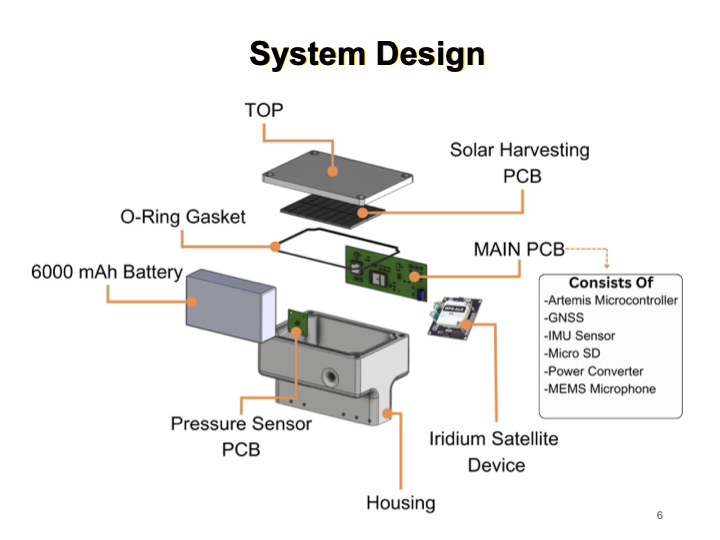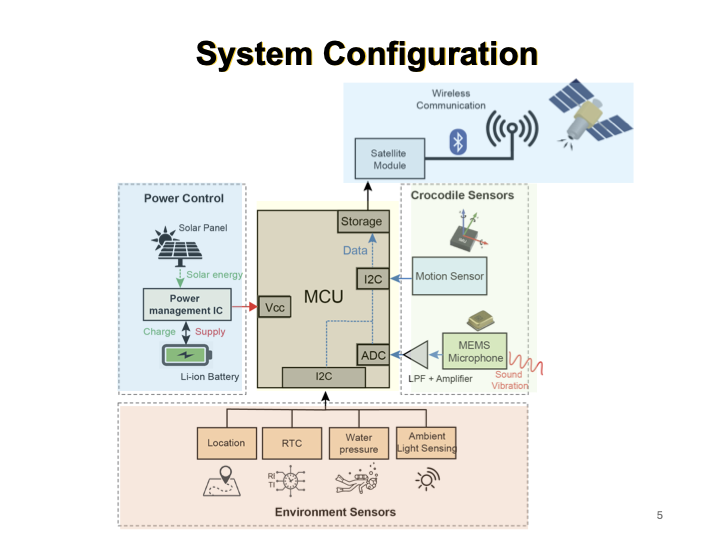Hi everyone, it’s time I introduce our project titled “Innovative Sensor Technologies for Sustainable Coexistence: Advancing Crocodilian Conservation and Ecosystem Monitoring in Costa Rica", our team of biologists (@maggiemcgreal) and engineers (@YoungHo_Shin @Christian4800), and thank WILDLABS and their partners at Arm for supporting it and us-- We have learned so much thus far and are so excited to continue working as well as learning from and interacting with all of you in the WILDLABS community.
Crocodiles are very special animals. They are long-lived, large-bodied, ectothermic, semi-aquatic apex predators that are uniquely affected by their external environment and influential in their ecosystem. These traits make them valuable sentinel species, or indicators of environmental and ecosystem health. For example, crocodilian studies have been crucial for our understanding of the consequences of environmental pollution and its effects on biological communities. However, crocodiles also present unique challenges related to our ability to observe free-ranging individuals in the wild and in terms of conservation and conflict management, as efforts to recover threatened populations also increase the potential for negative interactions with humans. Understanding the relationship between crocodiles and the physical environment is a crucial first step in understanding the nature of the relationship between crocodiles and humans, and in developing management strategies that promote sustainable coexistence. Crocodiles respond to their environment by altering their behavior, and these behavioral responses are reflected in their movement and activity patterns which can be quantified with advanced technology. However, these animals are among the most underrepresented in animal movement studies and in applications of such technology in general.
Therefore, our current research draws upon movement and behavioral ecology principles—using and promoting remote sensing technology as a tool for crocodilian monitoring, ultimately enabling us to address conservation and conflict challenges by tracking how individuals, populations, and ecosystems are responding to environmental and human-induced change over time. Our current work can be divided into 3 interrelated projects:
(I) Custom Tracking Devices for Crocodilians
(II) Seasonal Movement Strategies of Crocodiles in Costa Rica
(III) Accelerometers for Alligator Activity and Behavior Classification
I. Custom Tracking Devices for Crocodilians
- Purpose: To promote representation of crocodilians in animal movement research and improve the accessibility and utility of remote tracking technology for managers, biologists, conservationists, and local communities.
- Objective: To develop and test custom tracking devices by exploring and evaluating the various aspects of biologging / biotelemetry technology (housing and mounting design, power systems, sensor integration, data acquisition, data retrieval) in order to determine the best methods for continuous movement, behavioral, and physiological monitoring of crocodilians across systems, species, and situations.


II. Seasonal Movement Strategies of Crocodiles in Costa Rica
- Purpose: To understand the seasonal dynamics of crocodile movement patterns as they relate to hydrology and historic crocodile attack records as a crucial first step in developing effective strategies to address conservation and coexistence challenges.
- Objective: To investigate the influence of seasonal hydrology on C. acutus movement and activity patterns across sex and size classes using high resolution spatial data obtained from advanced GPS-satellite technology to track crocodile locations over an extended period of time.
- Species: American crocodile (Crocodylus acutus)
- Location: Lower Tempisque River Basin, Guanacaste, Costa Rica
- Deployment: 25 March - 1 April, 2024
- Technology: GPS-Iridium Satellite Trackers (Africa Wildlife Tracking)
- Sample size: n = 10
- Sampling interval: 3 hours
- Sampling duration: 1 year +
- Data retrieval: Iridium satellite communication
III. Accelerometers for Alligator Activity and Behavior Classification
- Purpose: To develop methods for the on-board processing of animal behaviors and activity summary metrics, increasing the amount of information obtained from remote tracking devices while reducing battery requirements and data costs.
- Objective: Measure triaxial acceleration in free-ranging alligators and use these data to generate a behavior classification model that identifies characteristic behaviors based on animal motion and posture [e.g. fast-start locomotion (feeding and escape), diving (descent and ascent), resting, swimming, walking] and to determine thresholds for classifying activity levels based on dynamic body acceleration metrics.
- Species: American alligator (Alligator mississippiensis)
- Location: Lake Maurepas, Louisiana
- Deployment: Latest October 2024
- Technology: Biologgers + VHF + pop-off mechanism*
- Sample size: n >= 2
- Sampling frequency (accelerometer): 32 Hz - 50 Hz
- Sampling regime: continuous
- Sampling duration: 1 week +
- Data retrieval: Device retrieval and manual download
I will use this thread to share additional files and photos for each of the projects in addition to our progress and challenges faced along the way. Please feel free to ask questions or give advice, any and all is appreciated!
4 December 2024 9:37pm
Here is a brief animation providing a visualization of the trackers we're producing:
4 February 2025 11:44am
Super interesting! I'm currently developing sensor accelerometers for fence perimeters in wildlife conservation centres. I think this is a really cool application of accelerometers; I would love to know how the sensor which you developed for part 3 looked like, or what type of software/machine learning methods you've used? Currently my design is a cased raspberry pi pico, combined with an accelerometer and ml decision trees in order to create a low-cost design. Perhaps there is something to be learnt from this project as well :)






Maggie McGreal